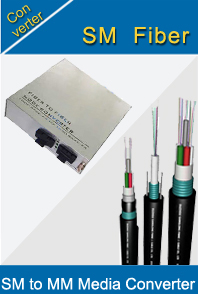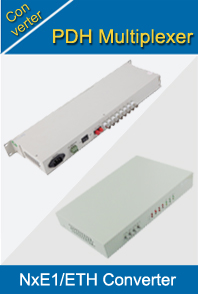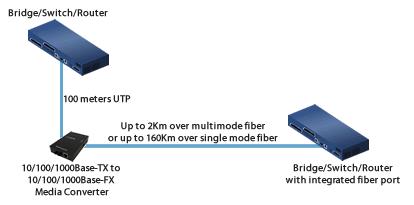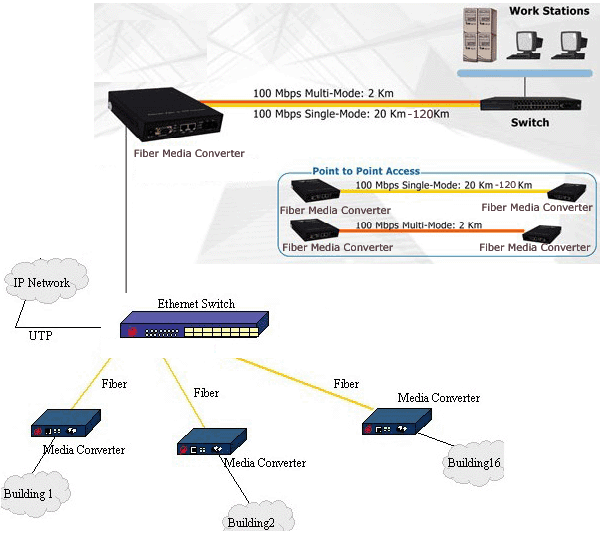-

- Sopto Home
-

- Special Topic
-

- Converter Knowledge
-

- Advantages of Media Conversion Technology
Converter Knowledge
- Form Factors and Application of Ethernet Media Converter
- Ethernet over 4 E1 Converter Brief Introduction
- What is the Difference between RS232 and RS485 Serial Interfaces
- What is the Difference between RS232 and RS485 Serial Interfaces
- How to Convert an Analog Telephone to VoIP Protocol?
- How to Find the Internet Protocol Address and Media Access Contr
- How to Convert from Fast Ethernet to Fiber Optics?
- How to Connect a Fiber Converter?
- How to Convert Ethernet to Fiber Media Converters?
SOPTO Special Topic
Certificate



Guarantee
Except products belongs to Bargain Shop section, all products are warranted by SOPTO only to purchasers for resale or for use in business or original equipment manufacturer, against defects in workmanship or materials under normal use (consumables, normal tear and wear excluded) for one year after date of purchase from SOPTO, unless otherwise stated...
Return Policies
Defective products will be accepted for exchange, at our discretion, within 14 days from receipt. Buyer might be requested to return the defective products to SOPTO for verification or authorized service location, as SOPTO designated, shipping costs prepaid. .....
Applications
An Ethernet to Fiber Media Converter can also be used where there is high level of electromagnetic interference or EMI which is a common phenomenon found in industrial plants. This interference can cause corruption of data over copper-based ethernet links. Data transmitted over fiber optic cable however is completely immune to this type of noise. An Ethernet to Fiber Optic Converter therefore enables you to inter-connect your copper-ethernet devices over fiber ensuring optimal data transmission across the plant floor.
SOPTO Products
- Fiber Optic Transceiver Module
- High Speed Cable
- Fiber Optical Cable
- Fiber Optical Patch Cords
- Splitter CWDM DWDM
- PON Solution
- FTTH Box ODF Closure
- PCI-E Network Card
- Network Cables
- Fiber Optical Adapter
- Fiber Optical Attenuator
- Fiber Media Converter
- PDH Multiplexers
- Protocol Converter
- Digital Video Multiplexer
- Fiber Optical Tools
- Compatible
Related Products
Performance Feature
Converter Knowledge
Recommended


Advantages of Media Conversion Technology
Network complexity, demanding applications, and the growing number of devices on the network are driving network speeds and bandwidth requirements higher and forcing longer distance requirements within the Local Area Network (LAN).
Media converters present solutions to these problems, by allowing the use of fiber when it is needed, and integrating new equipment into existing cabling infrastructure.
Media converters provide seamless integration of copper and fiber, and different fiber types in Enterprise LAN networks. They support a wide variety of protocols, data rates and media types to create a more reliable and cost-effective network.

Media Converter and Switch/Router/Bridge
Demands on the Network are Increasing:
- LANs and WANs are converging, and networks are growing in physical area
- Budget constraints are pushing preservation of capital investment in legacy switches and routers
- New network services are driving up bandwidth demand
Solutions Provided by Media Converters:
- Increase network distances by converting UTP to fiber and extending fiber links
- Maintain investments in existing equipment
- Increase the capacity of existing fiber with WDM wavelengths (when used with multiplexers)
New Applications for Media Converters:
- Remotely managed converter and multi-port switch configurations
- Convert WDM wavelengths for bandwidth capacity enhancement
- Enable Fiber-to-the-Desktop
Media converters do more than convert copper-to-fiber and convert between different fiber types. Media converters for Ethernet networks can support integrated switch technology, and provide the ability to perform 10/100 and 10/100/1000 rate switching. Additionally, media converters can support advanced bridge features – including VLAN, Quality of Service (QoS) prioritization, Port Access Control and Bandwidth Control – that facilitate the deployment of new data, voice and video to end users. Media converters can provide all these sophisticated switch capabilities in a small, cost-effective device.
Media converters save capital equipment expenditures (CAPEX) by enabling interconnection between existing switches, servers, routers and hubs; preserving the investment in legacy equipment. They also reduce CAPEX by avoiding the need to install new fiber links by enabling WDM technology through wavelength conversion.
Media converters also reduce network operating costs (OPEX) by helping to troubleshoot and remotely configure network equipment that is at distant locations, saving time and money when there is not a network administrator at the distant location.
Related Knowledge:
Why Protocol Converter Is Helpful?
Remote Ethernet Media Converter
Common Problem of Fiber Media Converter
The Difference between Media Converter and Optical Modem




